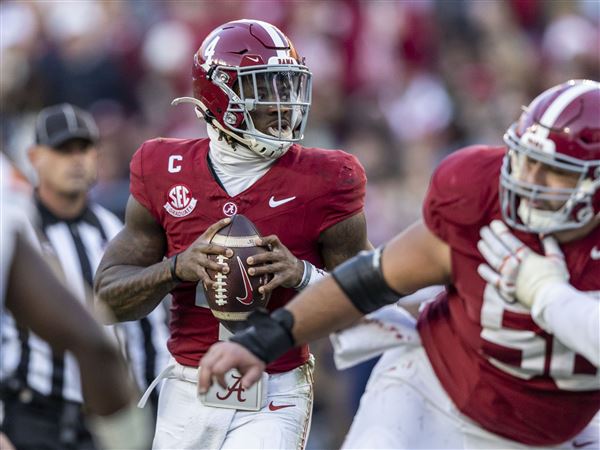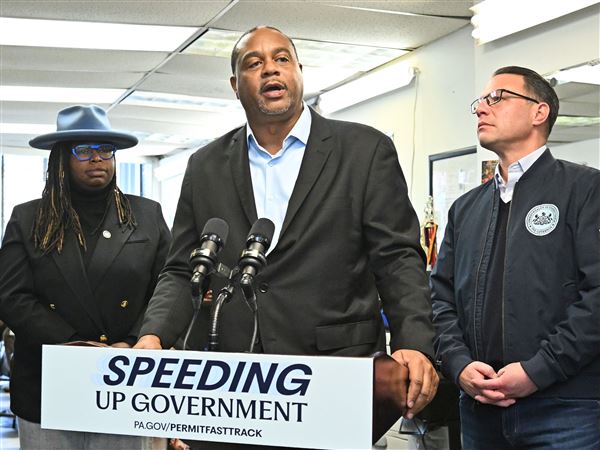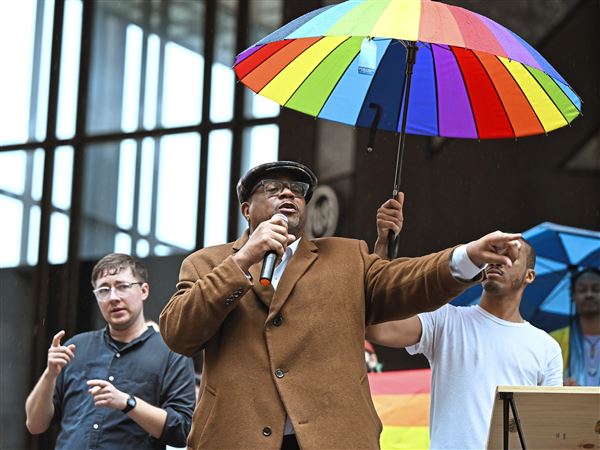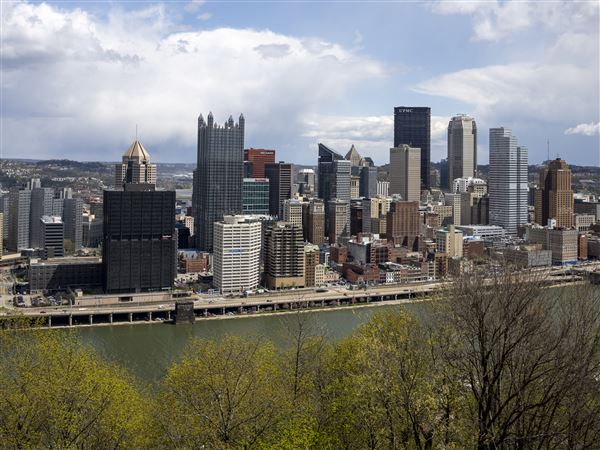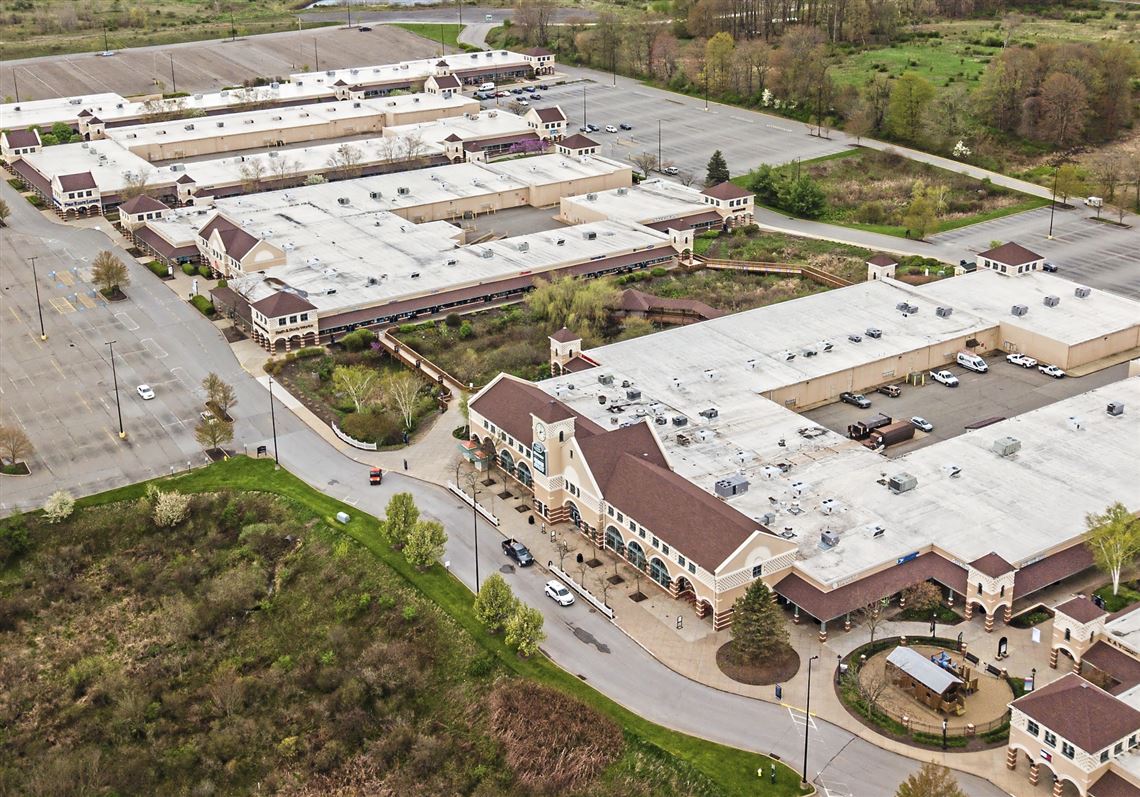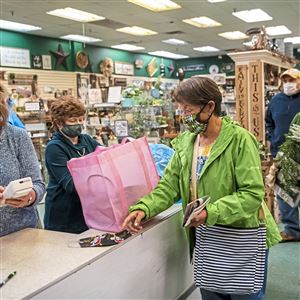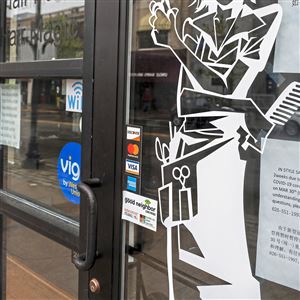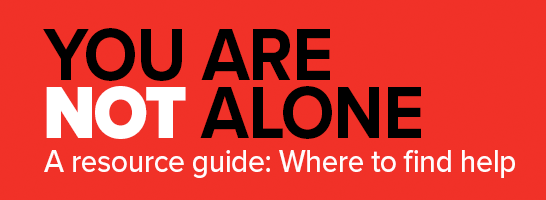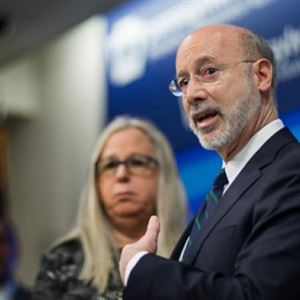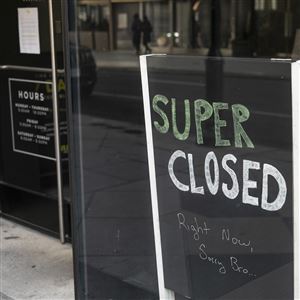In the food courts, seating will be limited and spaced out. In the bathrooms, every other sink and urinal will be taped off. Mall entrances will be restricted to managed the flow of people in and out of buildings.
And the staff will give you a mask if you don’t have one.
After weeks of empty malls and businesses shuttered in an attempt to stop the spread of COVID-19, Pennsylvania is beginning to loosen stay-at-home restrictions in the state’s northwestern and northcentral counties — allowing retailers to turn the lights back on.
But shopping during a pandemic won’t be the same experience as it was a year ago, or even six months ago during a lazy Saturday browsing for deals on shoes or jeans.
Simon Property Group, the largest mall owner in the U.S., plans to open up Grove City Premium Outlets in Mercer County this Friday after reopening dozens of its properties around the country where stay-at-home orders were relaxed.
As of May 5, the Indianapolis-based mall operator — which also owns Ross Park Mall and South Hills Village — had reopened 59 properties and announced plans to reopen another 18 within the next week, according to a statement posted to its website. Those plans are based on easing of state and local stay-at-home or closure orders, it said.
Randy Riddle, mayor of Grove City Borough, next to the outlet center, said the borough has benefited from not only employment from the shopping destination, but also the tourism draw over the years.
“We’ll have a new normal, but we’re excited to be in the yellow zone of the state to open back up,” Mr. Riddle said. “The borough has people employed at the outlets full time and part time, and it will be great to be able to get them back to work.”
Twenty-four Pennsylvania counties will move from red to yellow Friday, a label imposed by the state that eases closure orders for manufacturers, retail businesses, offices and nonprofits.
In Venango County, Cranberry Mall (not to be confused with shopping centers in Cranberry, Butler County) also plans to reopen on Friday.
But even as malls in Pennsylvania and other states reopen, it’s still up to individual retailers inside those shopping centers to unlock their doors. Most have closed temporarily or switched to curbside pick-up to help stop the spread of the highly contagious virus.
Grove City Premium Outlet’s website showed most retailers listed as closed or offering only pick-up services as of Thursday.
American Eagle Outfitters Inc., the South Side-based company that operates teen apparel brands American Eagle Outfitters and Aerie, said it is taking a “phased store reopening” approach to its locations.
“As a company, we have worked with top medical experts to develop industry-leading cleaning and safety protocols and have begun implementing them in our AE and Aerie stores as we began our phased store reopenings on May 1 through carefully coordinated efforts that adhere to all government regulations and the advice of medical experts,” a company spokesperson said.
It remains to be seen how comfortable shoppers will be browsing shops for the latest finds — even after weeks of self-isolation.
Last week, malls in Tennessee and Texas turned their lights on, but only a small percentage of their tenants were open for business and customer traffic was low, noted Gabriella Santaniello, president of A Line Partners, a retail research firm based in Los Angeles.
“Some of that is to be expected,” Ms. Santaniello said. “The malls are enforcing social distancing and some stores are imposing capacity limits. Some closed their dressing rooms or only allowed one person at a time.”
Some customers have turned up, of course.
“Those that did come in, they did make a purchase, but it was purposeful shopping,” she said. “They came in to get what they wanted and tended to not wander into other stores.”
Her prediction: It’s going to take a few weeks or even a few months before people get used to strolling around the mall again.
When CBL Properties, which owns Monroeville Mall in Monroeville and Westmoreland Mall in Greensburg, opened its malls in Texas on May 1, it took steps that included encouraging social distancing and wearing masks, prohibiting groups of more than 10 people in common areas; and closing play areas and food court seating.
The Chattanooga, Tenn.-based firm also required stores and restaurants to take steps like enforcing occupancy restrictions and social distancing; doing enhanced sanitizing; and closing fitting rooms.
Allegheny and Westmoreland counties, where CBL’s Pittsburgh-area shopping centers are located, remain under restrictions imposed by the state keeping many stores closed.
Among major retail chains, Macy’s was one of the first to announce a plan for reopening its fleet of stores. The iconic department store plans to offer “no-touch consultations” on such products as makeup and jewelry. Stores will operate fewer fitting rooms at a time, and items that have been tried on will be held for 24 hours before being returned to the sales floor.
Best Buy, Tapestry — which owns Kate Spade and Coach — and the coffee giant Starbucks also are slowly resurfacing.
One consultant warns that it’s not as simple as “flipping the Open/Close sign.” One can look to Georgia, which loosened its restrictions on businesses on April 24, for proof.
Some businesses chose not to risk reopening. Others were eager to do so. Some shops that did reopen only saw a few customers. Other small business owners and workers felt they had no choice but to return to work, according to local reports.
“Georgia’s example has made it clear that retail reopenings will not automatically see a return to ‘business as usual,’” said Michael Brown, a partner in the consumer practice of global strategy and management consultant, Kearney. “There has been a shift in customer needs, shopping habits and the environment as we know it.”
Still, there is a “brief but urgent window of opportunity to learn from Georgia’s reopening,” he said.
“Leading companies have quickly defined, tested, and effectively communicated their reopening policies while delineating a dedicated COVID task force to react to uncertainties. This will set some up for immediate short-term success and allow time to reengineer a longer-term strategy while others fall further behind.”
There’s also the question of whether consumers will have re-set their spending priorities during the pandemic.
Massive job losses have taken a toll, Ms. Santaniello of A Line pointed out. Many people are struggling to cover rent, mortgages and car bills, while waiting for unemployment checks and watching to see if their jobs will come back.
“This is an essentially collective moment, and I wonder if people will say, ‘I can’t spend the way I used to spend, when I have rent payments,’” she said. “Once people start working again, are they going to spend or pay down their credit card?”
Stephanie Ritenbaugh: sritenbaugh@post-gazette.com; 412-263-4910
First Published: May 7, 2020, 6:51 p.m.
Updated: May 8, 2020, 9:53 a.m.
